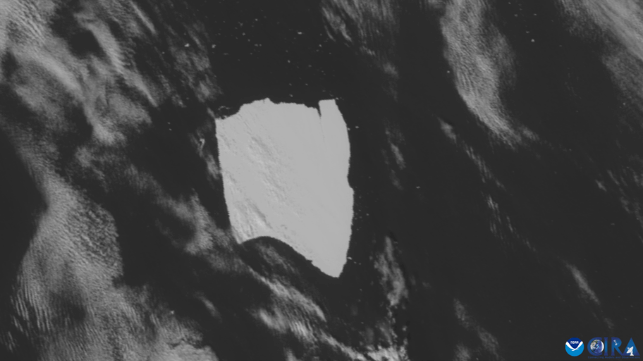Trillion-Tonne Iceberg is Stuck Spinning in the South Atlantic

When the world's largest iceberg drifted away from an Antarctic ice shelf in 2020, it was not expected to last long. Strong circumpolar currents would carry it up into the Atlantic, where it would melt away and break up. However, that did not happen - because it got stuck in a rare ocean vortex, and its slow, once-a-month orbit is not taking it anywhere.
A23a has been saying a long goodbye to Antarctica since the 1980s, when it was part of the Filchner-Ronne Ice Shelf and served as a home for a Soviet research base. In 1986, it broke off from the shelf and began to drift off into the Weddell Sea, taking the research station with it. The berg ran aground almost immediately, and a rescue mission safely recovered the scientists.
A23a stayed aground in the Weddell Sea for more than three decades. In 2020, it finally refloated and began to drift to the northwest, taking its time. By the end of 2023, it had reached the tip of the Antarctic Peninsula and the open reaches of the Southern Ocean. When it hit the Antarctic Circumpolar Current in April 2024, it was supposed to be carried northeast into the Atlantic, where it would melt away in warmer water.
However, the iceberg did not make it any further than the South Orkney Islands, and it appears that that is where it will stay for the near future. Researchers say that it is caught in a Taylor Column - a rotating cylindrical current that spans the full depth of the water column. A Taylor Column forms when a strong current passes over an isolated promontory on the bottom - for example, Pirie Bank, a dome-shaped rise that happens to be right below A23a's current position. In this case, the Arctic Circumpolar Current is passing over the bank, splitting in two on either side, and inducing a rotation in the mass of water located above the rise.
"The ocean is full of surprises, and this dynamical feature is one of the cutest you'll ever see," the British Antarctic Survey's Prof Mike Meredith told BBC.
Iceberg A23a's size is hard to visualize: it is about 1.1 million acres in area, about 75 times larger than Manhattan. It measures about 40 nautical miles by 32 nautical miles on a side, and it weighs about one trillion tonnes. All that frozen freshwater is slowly spinning at a rate of about one rotation every 24 days, and in the cold South Atlantic, it could be there a long while.
